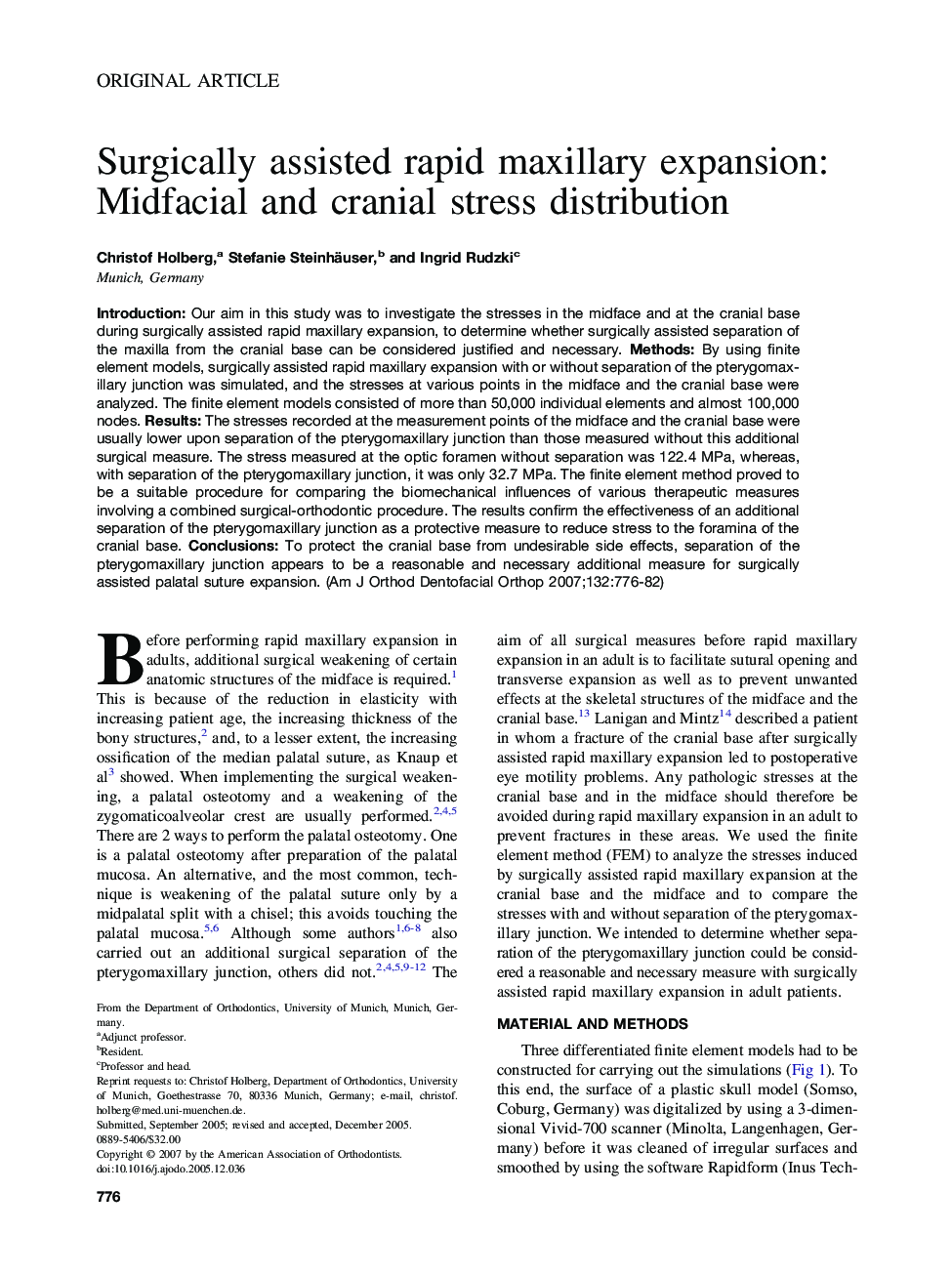| Article ID | Journal | Published Year | Pages | File Type |
|---|---|---|---|---|
| 3118633 | American Journal of Orthodontics and Dentofacial Orthopedics | 2007 | 7 Pages |
Introduction: Our aim in this study was to investigate the stresses in the midface and at the cranial base during surgically assisted rapid maxillary expansion, to determine whether surgically assisted separation of the maxilla from the cranial base can be considered justified and necessary. Methods: By using finite element models, surgically assisted rapid maxillary expansion with or without separation of the pterygomaxillary junction was simulated, and the stresses at various points in the midface and the cranial base were analyzed. The finite element models consisted of more than 50,000 individual elements and almost 100,000 nodes. Results: The stresses recorded at the measurement points of the midface and the cranial base were usually lower upon separation of the pterygomaxillary junction than those measured without this additional surgical measure. The stress measured at the optic foramen without separation was 122.4 MPa, whereas, with separation of the pterygomaxillary junction, it was only 32.7 MPa. The finite element method proved to be a suitable procedure for comparing the biomechanical influences of various therapeutic measures involving a combined surgical-orthodontic procedure. The results confirm the effectiveness of an additional separation of the pterygomaxillary junction as a protective measure to reduce stress to the foramina of the cranial base. Conclusions: To protect the cranial base from undesirable side effects, separation of the pterygomaxillary junction appears to be a reasonable and necessary additional measure for surgically assisted palatal suture expansion.
